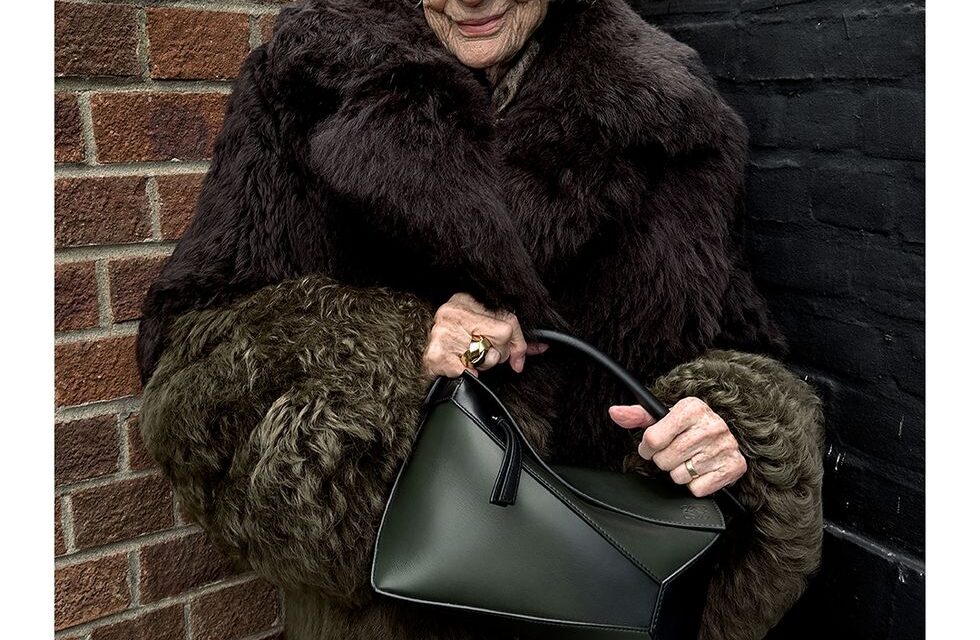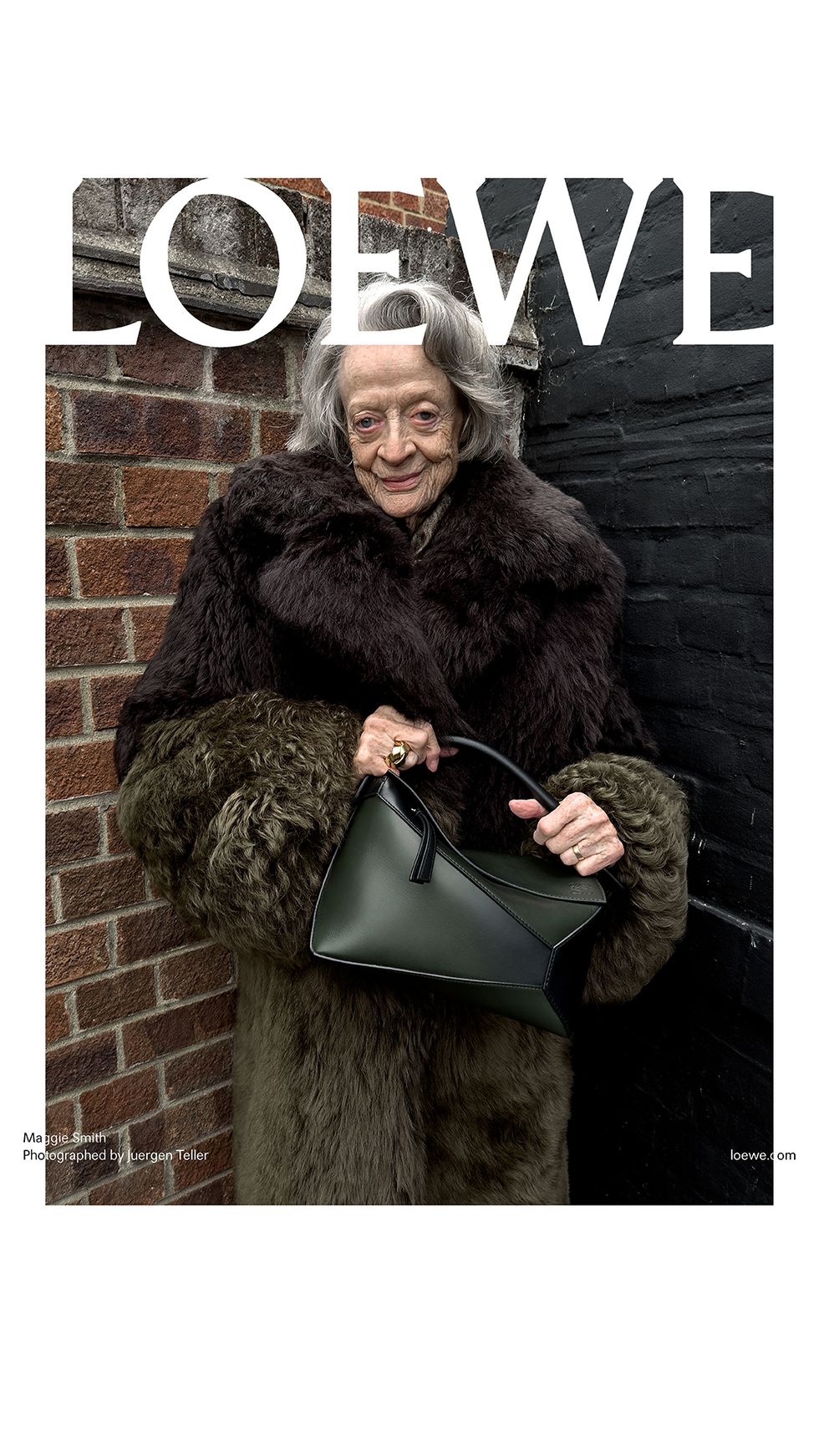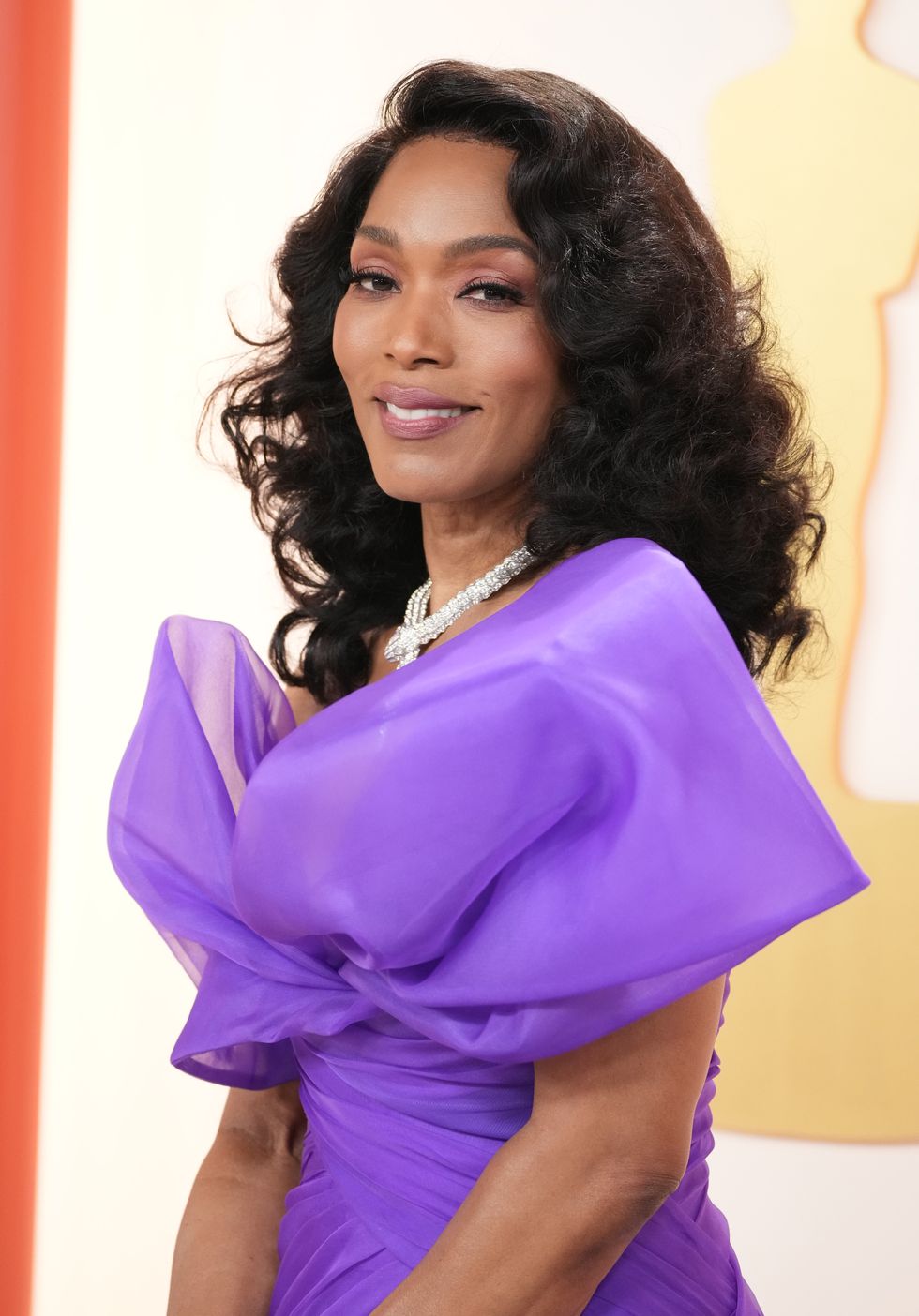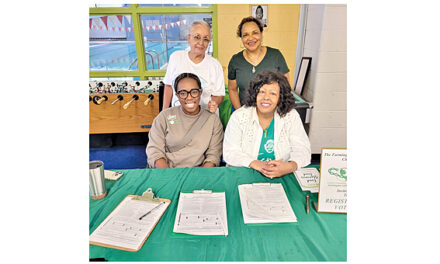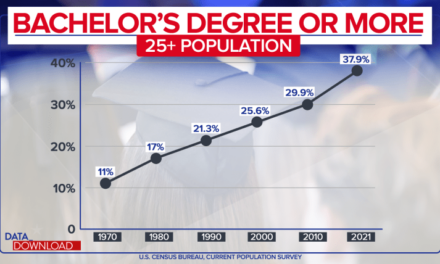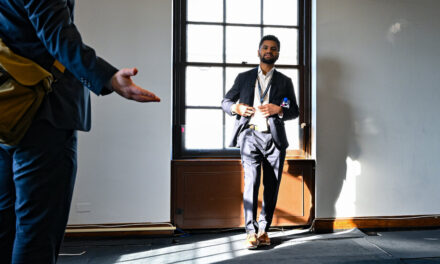When the images of 88-year-old Maggie Smith in the latest Loewe campaign were released last week, they were greeted warmly by the internet. And rightly so – in the youth-obsessed fashion industry, an octogenarian advertising a major label is something different. And, in a society that is ageing – it’s predicted that 24% of the UK population will be 65 or over by 2043 – this is something to be celebrated.
However, in the plaudits that come with Smith’s campaign, there was something noticeable. The actor joins other older campaign stars – ranging from Catherine Deneuve in the Saint Laurent campaign at the age of 80, to Mary Berry, also 88, in the Burberry campaign, and Charlotte Rampling for Massimo Dutti aged 77. Balenciaga, meanwhile, has 70-year-old Isabelle Hupert as ambassador, and 67-year-old fashion critic Cathy Horyn star in the most recent show. They all follow the lead of a campaign now seven years old – when Phoebe Philo cast an 80-year-old Joan Didion in Celine’s campaign in 2015.
All of these women are several decades over the age of usual campaign stars, and they are also all famous or well-known in their field. But they also share something else – they are all white.
Where is the campaign featuring 64-year-old Bernardine Evaristo, draped in the bright colours she prefers? Or 65-year-old Angela Bassett, with her cheekbones for days. Michelle Yeoh, 61, has already shown her fashion prowess on the red carpet, while a campaign starring 79-year-old Diana Ross would undoubtably break the internet. Perhaps – it’s a possibility – these women have turned down offers. Or they could have not got them in the first place.
This line-up of older models echoes another one that has been a cause of concern recently – that of the designers at major fashion houses. After Sean McGirr was announced as the new Creative Director at Alexander McQueen in September, replacing Sarah Burton, a composite of images began circling on social media, showcasing how the designers now in the chair at most major luxury brands were white men. As critics rightly asked, has diversity taken something of a step backwards?
There have undeniably been some shifts in terms of diversity in modelling in recent years. Older models have become a regular on catwalks from Michael Kors to Versace – with supermodels in their fifties, like Christy Turlington and Naomi Campbell, bringing their star power. A Fashion Spot report revealed that AW22 was the most racially diverse fashion month ever – with 48.6% of models on the catwalk non-white. Models beyond size zero have also become more prominent – with Karoline Vitto in Milan and Chopova Lowena in London casting only mid- and plus size models for SS24. Brands including Collina Strada and Sinead O’Dwyer, meanwhile, have highlighted fashion’s ableism, using disabled models in their shows and campaigns.
Both of these latter brands do sterling work to ensure their diverse casting is nuanced. And there are also some green shoots suggesting that older people of colour might soon be starring in more fashion imagery. For example, 75-year-old Grace Jones was the star of Wolford’s campaign in February. The Gentlewoman featured 70-year-old Chaka Khan on the cover of their latest issue, released in October, while founder-of-techno Jeff Mills is in Jil Sander’s autumn/winter campaign at the age of 60. There are also non-famous older Black models to note – including Mouchette Bell, a model in her mid-sixties, who works with Perfect magazine and Jigsaw, or Carolyn Doelling, who started modelling in her mid-seventies.
But, as the overwhelming whiteness of these older campaign stars demonstrates, there is still a long way to go till we all see people that look like all of us in fashion imagery. Looking at billboards, it can feel the only acceptable image of someone older is a white A-List actor who might also be described as a national treasure – the fact that there are relatively few older women of colour who would fit this category in the first place speaks of wider issue of who we venerate. In an ageing society, in which nearly a quarter of all of us will soon be over 65, that doesn’t reflect where we are at, or where we are going.

